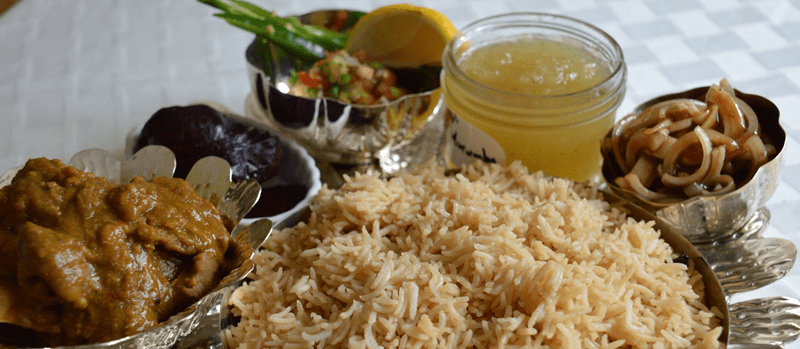And more importantly what it is not !!
Our dear friend and award winning cookbook author and chronicler of Parsi foods and recipes Niloufer Mavalwala has written about the iconic Parsi Dish Dhansak.
Hopefully this quells some of the misinformation floating around on social media and Whatsapp.
Niloufer writes…
The Iconic Dhansak
In the pantheon of Parsi cuisine, this is the one dish that identifies and is synonymous with Parsi food. Even for people who have never been exposed to our culture or food, this is the one dish they have somehow heard of. The Dhansak recipe in every home is a closely-guarded family secret with each household convinced that the Dhansak cooked in their home surpasses all others.
Dhansak – a cauldron of lentils, vegetables, spices and chunks of bone–in meat, cooked to perfection, sometimes with a wedge of fat added for the utter decadence of it (not for the faint-hearted), served on a bed of caramelised brown rice with a side of kachumbar – a blend of finely diced tomatoes, red onions and cucumber that has been salted and doused in vinegar, like the Persian salad Shirazi. Lots of fresh lemon wedges for squeezing over and yet another salad of sliced onions in a jaggery and tamarind sauce – gor amli ni kachumbar are a must. Often it has mini kebab balls presented alongside the platters of rice to add to the extravagance. While my family only prepares prawn kavabs, others also do meat for variety.
The folk tales, legends and facts about the origins of Dhansak are many, span centuries and have been passed on through word-of-mouth; thus they have ended up distorted, much like a game of Chinese whispers.
The most common story of Dhansak’s origin is that it is a dish associated with the ancient ritual of communal eating Ghambar, charum – marking the end of the period of mourning of a loved one and a traditional Sunday lunch.
Dhansak is an Indian dish and not a Persian one, but many believe that its concept and roots come from the famous Persian dish “Oush”. Folk tales of communities celebrating the season’s harvest with wine, food, dance and song are common. It is believed that everyone came together to cook and eat jointly. Wood fires topped with giant pots bubbled away, filled with all kinds of grains, vegetables, meat and noodles brought as an offering by the locals grateful for their harvest.
Continue reading the entire article on Niloufer’s Kitchen

